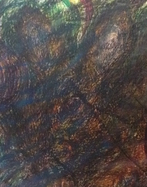"Toposes, Triples and Theories"
の 2.2 節 "Sheaves on a Space (位相空間上の層)" の練習問題 11 (第一版では 練習問題 (EQPB)) は次のように述べられている.
図式
\begin{equation*}
\DeclareMathOperator{\Ar}{Ar}
\DeclareMathOperator{\Arccos}{Arccos}
\DeclareMathOperator{\Arcsin}{Arcsin}
\DeclareMathOperator{\Arr}{Arr}
\DeclareMathOperator{\Card}{card}
\DeclareMathOperator{\Codomain}{cod}
\DeclareMathOperator{\Cone}{Cone}
\DeclareMathOperator{\Domain}{dom}
\DeclareMathOperator{\Ob}{Ob}
\newcommand{\Cdot}{\,\cdot^{\mathrm{op}}}
\newcommand{\Cocone}{\mathrm{Cocone}}
\newcommand{\Cone}{\mathrm{Cone}}
\newcommand{\Colim}{\mathrm{colim}\,}
\newcommand{\CommaCat}[2]{(#1/#2)}
\newcommand{\Eqclass}[4]{{#1#2#3}_{#4}}
\newcommand{\EqCls}[2]{{\left[#1\right]}_{#2}}
\newcommand{\Eqcls}[1]{\left[#1\right]}
\newcommand{\FnRest}[2]{{#1}|{#2}}
\newcommand{\Func}[2]{\mathrm{Func}(#1,#2)}
\newcommand{\g}{\varg}
\newcommand{\Hom}{\mathrm{Hom}}
\newcommand{\Id}[1]{\mathrm{id}_{#1}}
\newcommand{\In}{\mathrm{incl}}
\newcommand{\Inc}[2]{\mathrm{incl}\left(#1,#2\right)}
\newcommand{\Incl}[2]{\mathrm{incl}_{#1}^{#2}}
\newcommand{\InclArrow}[2]{\morphism(0,0)/>->/<450,0>[\Incl{#1}{#2} : {#1}\,\,`{#2};]}
\newcommand{\Lb}[1]{\mathrm{lb}(#1)}
\newcommand{\Lowerset}[1]{\downarrow\!\!{#1}}
\newcommand{\Mb}[1]{\mathbf{#1}}
\newcommand{\Mbb}[1]{\mathbb{#1}}
\newcommand{\Mlb}[1]{\mathrm{mlb}(#1)}
\newcommand{\Mr}[1]{\mathrm{#1}}
\newcommand{\Ms}[1]{\mathscr{#1}}
\newcommand{\Mt}[1]{\mathtt{#1}}
\newcommand{\Mub}[1]{\mathrm{mub}(#1)}
\newcommand{\Nat}{\mathrm{Nat}}
\newcommand{\Opp}[1]{{#1}^{\mathrm{op}}}
\newcommand{\Prj}[2]{\mathrm{proj}\left(#1,#2\right)}
\newcommand{\Proj}[2]{\mathrm{proj}^{#1}_{#2}}
\newcommand{\Pw}{\mathbf{P}}
\newcommand{\Rn}[1]{{\bmdefine{R}}^{#1}}
\newcommand{\q}{\hspace{1em}}
\newcommand{\qq}{\hspace{0.5em}}
\newcommand{\Rel}[1]{\langle{#1}\rangle}
\newcommand{\Rest}[2]{{#1}|{#2}}
\newcommand{\SkelCat}[1]{\mathrm{sk}(#1)}
\newcommand{\Slash}[1]{{\ooalign{\hfil/\hfil\crcr$#1$}}}
\newcommand{\SliCat}[2]{{#1}\,\big/\,{#2}}
\newcommand{\Src}{d^{0,\mathrm{op}}}
\newcommand{\Sub}{\mathrm{Sub}}
\newcommand{\ssqrt}[1]{\sqrt{\smash[b]{\mathstrut #1}}}
\newcommand{\Tgt}{d^{1,\mathrm{op}}}
\newcommand{\TwArCat}[1]{\mathrm{Tw}(#1)}
\newcommand{\Ub}[1]{\mathrm{ub}(#1)}
\newcommand{\Upperset}[1]{\uparrow\!\!{#1}}
\newcommand{\VectCat}[1]{#1 \mathchar`- \mathbf{Vect}}
\newcommand{\Grp}{\mathbf{Grp}}
\newcommand{\Mon}{\mathbf{Mon}}
\newcommand{\POs}{\mathbf{Poset}}
\newcommand{\Psh}{\mathbf{Psh}}
\newcommand{\Set}{\mathbf{Set}}
\newcommand{\Sh}{\mathbf{Sh}}
\newcommand{\Top}{\mathbf{Top}}
\newcommand{\A}{\mathscr{A}}
\newcommand{\B}{\mathscr{B}}
\newcommand{\C}{\mathscr{C}}
\newcommand{\D}{\mathscr{D}}
\newcommand{\E}{\mathscr{E}}
\newcommand{\F}{\mathscr{F}}
\newcommand{\I}{\mathscr{I}}
\newcommand{\J}{\mathscr{J}}
\newcommand{\K}{\mathscr{K}}
\newcommand{\M}{\mathscr{M}}
\newcommand{\N}{\mathscr{N}}
\newcommand{\R}{\mathscr{R}}
\newcommand{\T}{\mathscr{T}}
\newcommand{\U}{\mathscr{U}}
\newcommand{\V}{\mathscr{V}}
\newcommand{\W}{\mathscr{W}}
\newcommand{\X}{\mathscr{X}}
\newcommand{\Y}{\mathscr{Y}}
\newcommand{\Z}{\mathscr{Z}}
\newcommand{\sA}{\mathscr{A}}
\newcommand{\sB}{\mathscr{B}}
\newcommand{\sC}{\mathscr{C}}
\newcommand{\sD}{\mathscr{D}}
\newcommand{\sE}{\mathscr{E}}
\newcommand{\sF}{\mathscr{F}}
\newcommand{\sH}{\mathscr{H}}
\newcommand{\sI}{\mathscr{I}}
\newcommand{\sJ}{\mathscr{J}}
\newcommand{\sK}{\mathscr{K}}
\newcommand{\sL}{\mathscr{L}}
\newcommand{\sM}{\mathscr{M}}
\newcommand{\sN}{\mathscr{N}}
\newcommand{\sO}{\mathscr{O}}
\newcommand{\sP}{\mathscr{P}}
\newcommand{\sR}{\mathscr{R}}
\newcommand{\sS}{\mathscr{S}}
\newcommand{\sT}{\mathscr{T}}
\newcommand{\sU}{\mathscr{U}}
\newcommand{\sV}{\mathscr{V}}
\newcommand{\sW}{\mathscr{W}}
\newcommand{\sX}{\mathscr{X}}
\newcommand{\sY}{\mathscr{Y}}
\newcommand{\sZ}{\mathscr{Z}}
\newcommand{\Natural}{\mathbf{N}}
\newcommand{\Integer}{\mathbf{Z}}
\newcommand{\Real}{\mathbf{R}}
\newcommand{\Rational}{\mathbf{Q}}
\newcommand{\Complex}{\mathbf{C}}
\newdir{ >}{{}*!/-5pt/@{>}}
\newdir{ (}{{}*!/-2pt/@^{(}}
\xymatrix@=48pt {
A \ar[d] \ar[r] & B \ar[d]_{g} \ar@<0.5ex>[r] \ar@<-0.5ex>[r] & C \ar[d]^{h} \\
A' \ar[r] & B' \ar@<0.5ex>[r] \ar@<-0.5ex>[r] & C'
}
\end{equation*} において, 左の四角形の図式は可換であり, 右側の四角形について $h \circ d_i = d'_i \circ g,\, i=0,1$ が成立しているとする. このとき次を示せ.
(a) 下の列がイコライザーで, 左側の四角形が引き戻しならば上の列もイコライザーである.
(b) 上の列がイコライザーで, 下の列における 2 つの射の合成が等しく, $f$ が単射ならば左側の四角形は引き戻しである.
(b) で単射性が要求されている射 $f$ が問題の図式内に存在しないが, これは $h$ の誤植の可能性がある. $h$ が単射であることは (b) の証明において必要になる. しかしそれでもまだ問題の前提条件は不十分である. 後述するように反例が存在する.
この練習問題の結果は, 位相空間 $X$ 上の層の圏 $\Mb{Sh}(X)$ がトポスであることの証明に使われている.
このことを踏まえて考察した結果, (a), (b) の問題文は次のように前提条件を加えた形で述べればいいのではないかという結論に達した.
便宜上, 図式の各々の射に名前を付けておく.
\begin{equation}
\label{dgm:EQPB}
\begin{xy}
\xymatrix@=48pt {
A \ar[d]_{k} \ar[r]^{l} & B \ar[d]_{g} \ar@<0.5ex>[r]^{d^0} \ar@<-0.5ex>[r]_{d_1} & C \ar[d]^{h} \\
A' \ar[r]_{f} & B' \ar@<0.5ex>[r]^{d'_0} \ar@<-0.5ex>[r]_{d'_1} & C'
}
\end{xy}
\end{equation} ここで $h \circ d_i = d'_i \circ g,\, i=0,1$ が成立している. 証明すべき問題は次のように述べられる.
(a') 下の列がイコライザーで, 左の四角形が引き戻しで, 上の列における 2 通りの射の合成が等しいならば, 上の列はイコライザーである.
(b') 上の列がイコライザーで, 下の列における 2 通りの射の合成が等しく, $f$ と $h$ が単射ならば, 左の四角形は引き戻しである.
このように変更した場合, 証明はイコライザーと引き戻しの普遍性を用いて行うことができる (ここでは省略する).
問題を考える過程で元の (a), (b) に対する反例を作成した. いずれも位相空間と連続写像の圏 $\Top$ におけるものである.
(a) に対する反例
● 下の列がイコライザーで, 左側の四角形が引き戻しだが上の列がイコライザーではない例.
$A=B=C=\Integer$ (整数全体の集合),
\begin{equation*}
A' = \left\{ \left(n+\frac{1}{4}\right)\pi \,\big|\, n \in \Integer \right\},
\end{equation*} $B'=C'=\Real$ (実数全体の集合) とする. 図式(\ref{dgm:EQPB}) における各々の射を以下のように定義する.
\begin{equation*}
k(n) = g(n) = \left(n+\frac{1}{4}\right)\pi, \\
l(n) = n, \\
f(n) = \Incl{A'}{\Real}(n) = n, \\
d_0(n) = 2n, \quad d_1(n) = 2n+1, \\
d'_0(x) = \cos(x), \quad d'_1(x) = \sin(x), \\
h(n) = \begin{cases}
\displaystyle \cos\!\left(\frac{2n+1}{4}\pi\right)
& (\text{$n$ が偶数のとき}), \\
\displaystyle \sin\!\left(\frac{2n-1}{4}\pi\right)
& (\text{$n$ が奇数のとき}).
\end{cases}
\end{equation*}
\begin{equation}
\label{dgm:counterexample-a}
\begin{xy}
\xymatrix@=48pt {
\Integer \ar[d]_{k} \ar[r]^{l=\Id{~}} & \Integer \ar[d]_{g} \ar@<0.5ex>[r]^{d^0(n)=2n} \ar@<-0.5ex>[r]_{d_1(n)=2n+1} & \Integer \ar[d]^{h} \\
A' \ar@{^{ (}->}[r]_{f=\Incl{A'}{\Real}} & \Real \ar@<0.5ex>[r]^{d'_0=\cos} \ar@<-0.5ex>[r]_{d'_1=\sin} & \Real
}
\end{xy}
\end{equation}
まず, 任意の整数 $n$ に対して
\begin{align*}
h \circ d_0(n)
& = h(2n) = \cos\left(\frac{4n+1}{4}\pi\right) = \cos\left(\!\left(n+\frac{1}{4}\right)\!\pi\right) = \cos(g(n)) = d'_0 \circ g(n)), \\
h \circ d_1(n)
& = h(2n+1) = \sin\left(\frac{4n+1}{4}\pi\right) = \sin\left(\!\left(n+\frac{1}{4}\right)\!\pi\right) = \sin(g(n)) = d'_1 \circ g(n)
\end{align*} だから図式の前提条件である $h \circ d_i = d'_i \circ g,\, i=0,1$ は成立している.
図式 (\ref{dgm:counterexample-a}) の下の列について,
\begin{align*}
d'_0 \circ f\left(\!\left(n+\frac{1}{4}\right)\!\pi\!\right)
& = \cos\left(\!\left(n+\frac{1}{4}\right)\!\pi\!\right)
= \begin{cases}
\displaystyle \frac{1}{\sqrt{2}} & (\text{$n$ が偶数のとき}) \\
\displaystyle -\frac{1}{\sqrt{2}} & (\text{$n$ が奇数のとき})
\end{cases} \\
& = \sin\left(\!\left(n+\frac{1}{4}\right)\!\pi\!\right) \\
& = d'_1 \circ f\left(\!\left(n+\frac{1}{4}\right)\!\pi\!\right)
\end{align*} となるから $d'_0 \circ f=d'_1 \circ f$ である. 特に
\begin{equation}
\label{ex:cos=sin}
\left\{ x \in \Real \mid d_0(x)=\cos(x)=\sin(x)=d_1(x) \right\}
= \left\{ \left(n+\frac{1}{4}\right)\pi \,\big|\, n \in \Integer \right\}
= A'
\end{equation} である.
図式 (\ref{dgm:counterexample-a}) の下の列がイコライザーであることを示す.
射 $c : T \rightarrow \Real$ が $d'_0 \circ c = d'_1 \circ c$ を満たしている, すなわち, 図式
\begin{equation*}
\begin{xy}
\xymatrix@=48pt {
T \ar[r]^{c} & \Real \ar@<0.5ex>[r]^{d'_0=\cos} \ar@<-0.5ex>[r]_{d'_1=\sin} & \Real
}
\end{xy}
\end{equation*} が可換であると仮定する.
(\ref{ex:cos=sin}) より $c$ の値域は $A'$ に含まれる. つまり $c(T) \subset A'$ である. よって
\begin{equation*}
T_n = c^{-1}\!\left(\!\left(n+\frac{1}{4}\right)\!\pi\!\right) \quad (n \in \Integer)
\end{equation*}
とおくと, $T$ は $T_n$ の非交和として
\begin{equation*}
T = \coprod_{n \in \Integer} T_n
\end{equation*} と表わすことができる. ここで $u : T \rightarrow \Real$ を
\begin{equation*}
u(x) = \left(n+\frac{1}{4}\right)\pi \quad (x \in T_n;\, n \in \Integer)
\end{equation*} と定義すれば, 各 $t \in T_n$ に対して
\begin{align*}
c(t) & = \left(n+\frac{1}{4}\right)\pi, \\
f \circ u(t) & = \Incl{A'}{\Real} \circ u(t) = u(t) = \left(n+\frac{1}{4}\right)\pi
\end{align*} が成り立つから $u$ は $f \circ u=c$ を満たす, すなわち $u$ は図式
\begin{equation*}
\begin{xy}
\xymatrix@=48pt {
T \ar@{.>}[r]_{u} \ar@/^1.5pc/[rr]^{c} & A' \ar@{{ (}->}[r]_{f=\Incl{A'}{\Real}} & \Real \ar@<0.5ex>[r]^{d'_0=\cos} \ar@<-0.5ex>[r]_{d'_1=\sin} & \Real
}
\end{xy}
\end{equation*} を可換にする射である.
$u$ の一意性を示す. $u' : T \rightarrow \Real$ を $f \circ u' = c$ を満たす任意の射とすると $f \circ u = c = f \circ u'$ となるが, $f$ が包含写像で単射であることより $u=u'$ が導かれる. よって $u$ は一意的に定まる.
したがって下の列はイコライザーである.
次に図式 (\ref{dgm:counterexample-a}) の左側の四角形の図式を考える. まず
\begin{equation*}
f \circ k(n) = k(n) = g(n) = g \circ l(n)
\end{equation*} だからこの図式は可換である.
これが引き戻しであることを示す. 2 つの射 $x : T \rightarrow A'$, $y : T \rightarrow \Integer$ が $f \circ x = g \circ y$ を満たす, つまり図式
\begin{equation*}
\begin{xy}
\xymatrix@=48pt {
T \ar[d]_{x} \ar[r]^{y} & \Integer \ar[d]^{g} \\
A' \ar@{^{ (}->}[r]_{f=\Incl{A'}{\Real}} & \Real
}
\end{xy}
\end{equation*} を可換にすると仮定する. 各 $n \in \Integer$ に対して $T_n = y^{-1}(n)$ と定義すると, $T$ は $T_n$ の非交和として
\begin{equation*}
T = \coprod_{n \in \Integer} T_n
\end{equation*} と表わせる. また, 上の図式の可換性によって各 $t \in T_n$ に対して
\begin{equation*}
f \circ x(t) = x(t) = g \circ y(t) = g(n) = \left(n+\frac{1}{4}\right)\pi
\end{equation*} である.
ここで $u : T \rightarrow \Integer$ を
\begin{equation*}
u(t) = n \quad (t \in T_n)
\end{equation*} と定義すると, $t \in T_n$ に対して
\begin{align*}
k \circ u(t) & = k(n) = \left(n+\frac{1}{4}\right)\pi = x(t), \\
l \circ u(t) & = u(t) = n = y(t)
\end{align*} となるから $x=k \circ u$, $y=l \circ u$ であり, 図式
\begin{equation*}
\begin{xy}
\xymatrix@=24pt {
T \ar@/_/[dddr]_{x} \ar@/^/[drrr]^{y} \ar@{.>}[dr]|-{u} \\
~ & \Integer \ar[dd]_{k} \ar[rr]^{l=\Id{~}} && \Integer \ar[dd]^{g} \\
~ & ~ \\
~ & A' \ar@{^{ (}->}[rr]_{f=\Incl{A'}{\Real}} && \Real
}
\end{xy}
\end{equation*} は可換である.
$u$ の一意性を示す. $u' : T \rightarrow \Integer$ を $x=k \circ u'$, $y=l \circ u'$ を満たす任意の射とすると, $k$ が恒等写像であることから $u' = l \circ u' = y = l \circ u = u$ となり $u=u'$ が導ける. よって $u$ は一意的に定まる.
以上より図式 (\ref{dgm:counterexample-a}) の左側の四角形は引き戻しである.
最後に上の列について, $d_1$, $d_1$ の定義により
\begin{equation*}
d_0 \circ k(n) = d_0(n) = 2n \neq 2n+1 = d_1(n) = d_1 \circ k(n)
\end{equation*} である.
したがって上の列はイコライザーではない.
これにより, 図式 (\ref{dgm:counterexample-a}) において, 下の列がイコライザーで左側の四角形が引き戻しであっても, 上の列がイコライザーにならない例が存在することがわかる.
(b) に対する反例は次の文章でまとめる.
【このカテゴリーの最新記事】
-
no image
-
no image
-
no image
-
no image
-
no image
